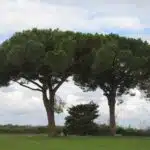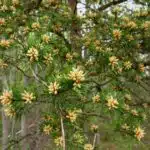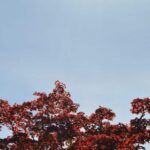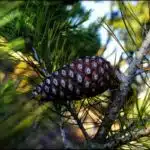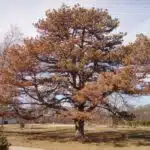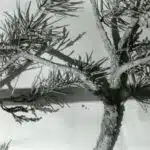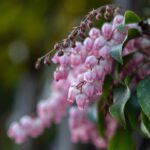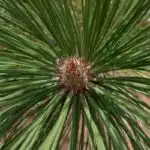The Japanese Black Pine is an ancient symbol of strength and resilience, standing tall through the ages and surviving even the harshest of conditions. Allowing this majestic tree to grace your garden can be a rewarding experience for both you and the environment. With its iconic silhouette, dark green needles, and vibrant cone-like fruits, caring for the Japanese Black Pine can be a rewarding journey that will bring life to your outdoor spaces.
As a specialist in botany and gardening, I’m here to provide all of the information necessary to ensure that your Japanese Black Pine not only survives but thrives in your outdoor spaces. From understanding its needs when it comes to soil composition and moisture content, to ensuring proper pruning techniques are used, I’m here to provide all of the tips and tricks needed for successful cultivation.
Caring for the Japanese Black Pine is an activity that’s sure to bring joy as you witness this beautiful tree grow into maturity. With just a few simple steps taken along the way – such as providing adequate water and nutrition – you’ll be able to watch with pride as this magnificent tree stands tall in your garden or landscape. So let’s get started!
What Is A Japanese Black Pine Tree?
Japanese black pines (Pinus thunbergii) are an evergreen conifer tree species native to Japan, and are one of the most popular ornamental trees. They have a graceful look and make excellent additions to any landscape. The trees can reach heights of up to 50 feet at maturity, with a spread that is almost as wide. They have attractive yellow-green needles and bark that is reddish brown in color.
The trees grow best in full sun and well-drained soil, with a pH between 4.5 and 6.5, which makes them suitable for planting on slopes or near water features. They prefer cooler climates but can adapt to warmer regions if given proper care. Japanese black pines do not require much fertilizer, just an annual application of compost during the growing season should be sufficient. Pruning should also be done with care since the branches of this species tend to break easily when young.
Japanese black pines are relatively low-maintenance plants once established, so as long as they receive adequate water and nutrients, they should thrive in their environment. With proper care, these trees can live for many years and will bring beauty to your garden for generations!
Where To Plant A Japanese Black Pine Tree
Japanese black pine (Pinus thunbergii) is an ornamental evergreen tree that grows in many parts of the world. This species of pine is popular for its ability to tolerate tough conditions such as cold temperatures, poor soil and drought. In fact, it’s estimated that over 30 million Japanese black pines are planted annually around the globe.
So, where should you plant a Japanese black pine? The ideal location should receive full sun or partial shade and have well-drained soil. It’s important to choose a spot with plenty of space for the tree to grow since it can reach heights of up to 40 feet and widths of 25 feet or more when mature. Avoid planting Japanese black pines too close to buildings or other plants as they require lots of room for their roots to spread out without interference.
When selecting a planting site, be mindful of prevailing winds in your area – Japanese black pines are especially vulnerable to strong gusts and may need extra protection from these during winter months. Additionally, due to their shallow root systems, they may not fare so well near bodies of water such as oceans and large lakes that experience frequent flooding.
Overall, when it comes to finding the perfect spot for your Japanese black pine tree, you’ll want one that receives adequate sunlight and has plenty of space for the roots to grow without interfering with nearby structures or other plants. With proper care and attention, this hardy species will thrive in almost any environment!
Soil Requirements For Japanese Black Pine Trees
When it comes to Japanese black pine trees, soil requirements are of the utmost importance. In fact, they are one of the most important factors when planting this type of tree. As a specialist in botany and gardening, I can tell you that if soil requirements are not met, your tree may struggle to grow and flourish. Fortunately, there are some tips to help you get your Japanese black pine off to a great start!
Firstly, Japanese black pine trees prefer well-draining soil that is slightly acidic. With this in mind, it’s best to avoid planting them in areas with heavy clay soils or soils that hold too much water. Additionally, adding organic matter such as compost or manure will help improve the drainage and nutrient availability for your tree.
Of course, it’s also important to ensure the pH of your soil is within an acceptable range for a Japanese black pine tree. Generally speaking, it should be around 6.0 – 7.0 on the pH scale for optimal growth and health of your tree. However, if you’re unsure about the pH levels in your soil then it’s wise to get it tested before planting a Japanese black pine so you know what needs to be done beforehand.
With these steps taken care of prior to planting your Japanese black pine tree, you can look forward to having an attractive addition to your garden that will provide many years of joy! Now that we’ve covered soil requirements for this type of tree, let’s move on to sun requirements – another key factor in growing a healthy and successful Japanese black pine tree.
Sun Requirements For Japanese Black Pine Trees
Japanese black pine trees are truly majestic in their beauty! Planting and caring for these trees is a task that requires great knowledge and attention to detail. Sun requirements are an incredibly important part of this process, so let’s take a look at what needs to be done to ensure your tree gets the perfect amount of light.
Firstly, Japanese black pines prefer full sun, and should be planted in an area with at least six hours of direct sunlight daily. If planting multiple trees, leave about 10-15 feet between each one to give them enough room to grow. Additionally, it’s best to avoid placing the tree too close to buildings or other structures that could cast shade on it.
Secondly, when selecting a planting location in your garden, make sure there is enough space around the tree for air circulation. This will help keep the foliage dry and prevent diseases which can be fatal for Japanese black pines. Lastly, if you notice branches blocking out any sunlight from reaching lower parts of the tree, it’s best to prune them away carefully as this will encourage even growth throughout the entire plant.
By following these simple steps and keeping your Japanese black pine in full sun conditions, you can ensure its healthy development over time. Now let’s move onto water requirements for this beautiful species – another key factor that needs careful attention!
Water Requirements For Japanese Black Pine Trees
Watering is a crucial factor in the health and growth of Japanese black pine trees. Without proper hydration, their needles can turn yellow, and their bark may become dry and brittle. It’s important to ensure that these conifers receive an adequate amount of water, but also that they’re not overwatered.
When it comes to watering Japanese black pine trees, there are a few key points to keep in mind. First of all, be sure to select an area with well-draining soil; this will help prevent root-rotting due to excess moisture. Secondly, it’s important to make sure that the soil around the tree is consistently moist. During hot or dry weather, you may need to water more frequently than usual. Finally, use a slow-drip irrigation system or drip line instead of overhead sprinklers; this will help ensure that the needles stay dry and free from mold or mildew.
By following these guidelines for adequate hydration, you can give your Japanese black pine tree the best chance for healthy growth and development. To further ensure its success, it’s important to fertilize the soil around your tree on a regular basis as well – something we’ll look at next!
Fertilizing A Japanese Black Pine Tree
Fertilizing a Japanese Black Pine Tree is a necessary step in ensuring that it remains healthy and vigorous. Here are some guidelines to follow when considering fertilizing your tree:
- Use an organic fertilizer specifically made for conifers.
- Do not use a standard garden fertilizer, as it will burn the needles of the tree.
- Apply the fertilizer in early spring, just before new growth begins to appear.
- Spread the fertilizer evenly around the base of the tree, avoiding contact with the trunk or limbs.
In order to maximize the effectiveness of fertilizing your Japanese Black Pine Tree, you should use a slow-release fertilizer that will provide essential nutrients over an extended period of time. This type of fertilizer is available at most garden centers, and can be applied directly to the soil or mixed with water and sprayed onto the foliage. Additionally, you should avoid using too much fertilizer, as this can potentially damage your tree’s roots.
Once you’ve chosen a suitable fertilizer for your tree, it’s important to ensure that it is applied correctly in order to promote healthy growth and prevent any potential issues from arising. Be sure to apply it evenly throughout the root zone so that all parts of your tree receive adequate nutrition throughout its lifetime. With proper fertilization and care, you can ensure that your Japanese Black Pine Tree remains healthy and vibrant for many years to come!
By following these guidelines for fertilizing your Japanese Black Pine Tree, you can help it reach its full potential and keep it looking great all year round. Now let’s move on to pruning this majestic species of conifer!
Pruning A Japanese Black Pine Tree
Pruning a Japanese black pine tree is an art form, and can be a daunting task for even the most experienced gardener. If you’re ready to take on this challenge, here are some tips to help you out. First of all, it’s important that you understand what pruning does for a tree—it helps promote healthy growth by removing dead branches and stimulating new growth. Additionally, it keeps the tree’s shape in balance and helps maintain the desired aesthetic.
To begin pruning your Japanese black pine tree, start by trimming any dead or diseased branches with sharp shears or a saw. This will help ensure that any fungal disease won’t spread to other parts of the tree. After this, use lopping shears to cut away any crossing branches or shoots growing from the trunk—this will prevent them from becoming entangled and damaging each other over time. Finally, use bonsai scissors to trim off small twigs and leaves that are growing beyond the desired shape of your tree.
TIP: When pruning your Japanese black pine tree, remember not to take too much off at once—trim only as much as necessary at a given time so as not to shock your tree!
Training A Japanese Black Pine Tree
Training a Japanese black pine tree is like sculpting a masterpiece. It requires patience, skill and dedication to create something of beauty and value from a seemingly ordinary object. With the right guidance and knowledge, you can transform an otherwise plain tree into something extraordinary.
When training a Japanese black pine tree, it is important to consider the overall shape you want to achieve in order to maximize its beauty. The most common method of training is through pruning, which involves selectively removing branches to produce an appealing silhouette. This should be done gradually over time, as the growth of the tree will occur naturally over time. In addition to pruning, wiring may also be used to shape branches into desired forms.
Finally, it is important to monitor your work closely throughout the process in order to ensure that no damage has been done to the tree. It’s best to begin with smaller branches and work your way up until you are confident in your technique before attempting larger ones. With proper care and attention, you can create an aesthetically pleasing Japanese black pine that will bring joy for years to come!
Controlling Pests And Diseases Of Japanese Black Pine Trees
Controlling pests and diseases of Japanese black pine trees is an important part of ensuring these majestic evergreens stay healthy. With the right preventative measures, you can help your pine tree remain pest-free and healthy for many years to come.
The most commonly encountered pests are caterpillars, aphids, mites, and scale insects. These critters can damage the needles, leaves, and bark of the tree. To stop them from causing any harm, it’s essential to keep an eye out for any signs of infestation. If you spot any telltale signs such as discolored needles or sticky residue on the bark, take action right away. You can use horticultural oil or insecticidal soap to get rid of them.
Diseases such as Phytophthora root rot, needle cast disease, and Cercospora needle blight can also affect Japanese black pines if they’re not properly cared for. The best way to prevent these diseases is to keep your tree well-watered but not overwatered and provide adequate air circulation around its branches so that it stays dry during humid weather. If a disease does occur, consult with a certified arborist who can diagnose and treat it appropriately.
By taking proactive steps to control pests and diseases in your Japanese black pine tree, you’ll ensure it remains beautiful for many years to come. Propagating this species is rather straightforward; all you need are some healthy cuttings from a mature tree and the right conditions for them to grow in and soon enough you’ll have a new generation of Japanese black pines!
Japanese Black Pine Tree Propagation
Propagating Japanese Black Pine Trees is an art form that takes a significant amount of skill and knowledge to master! With the right techniques, anyone can grow beautiful healthy trees from a single seed – making it a great way to have multiple plants without having to buy them all.
Propagation is done in one of two ways: either by cutting or by layering. Cuttings are taken from mature trees and planted into soil, where they will form roots. Layering involves burying part of the stem of the parent tree in soil, which encourages new roots to develop. Both methods require patience and attention, but with a little effort you can produce strong and healthy Japanese Black Pine Trees.
When propagating your Japanese Black Pines, it’s important to choose the right soil and provide plenty of water and sunlight. The soil should be light and well-drained, preferably with some organic matter mixed in. Watering your plants regularly will help to keep them healthy, while providing plenty of sun will ensure that they get enough energy for growth. With these simple steps, you should be able to successfully propagate your Japanese Black Pine Trees!
Japanese Black Pine Bonsai Care
When it comes to caring for a Japanese black pine bonsai, the possibilities are endless. Take the case of Mr. Smith, who has just acquired one such tree. He is now on a journey to learn how best to care for it and make it thrive.
The first step in caring for a Japanese black pine bonsai is to understand its unique needs and requirements. This includes pruning and shaping, as well as providing the right environment and soil drainage. Proper watering is also essential–too much water can cause root rot, while too little will lead to drooping branches and wilting foliage. Additionally, fertilizing should be done on a regular basis, using a specialized fertilizer designed for conifers like this species or an all-purpose bonsai fertilizer.
Once all of these steps have been taken care of, the next step is to pay attention to any signs of disease or pest infestation that may arise. These can usually be treated with insecticides or fungicides if necessary; however, ensure that you follow the manufacturer’s instructions when using these products on your Japanese black pine bonsai tree. Finally, make sure you keep up with regular maintenance tasks such as repotting (every two years) and pruning (at least once per season).
TIP: When caring for your Japanese black pine bonsai tree, it’s important to remain patient and consistent with your routine. With time and effort, you’ll soon have an impressive specimen that will enhance any home or garden!
Japanese Black Pine Tree Varieties
The variety of Japanese Black Pine trees available for planting is vast. As a botanist and gardener, I am well-versed in the various types of trees that can be found in this species. From cultivated varieties to wild-types, there are many different shapes and sizes to choose from.
The most common type of tree used in cultivation is the upright form, which is a tall, narrow tree with an umbrella-like canopy. This shape makes them ideal for bonsai or as ornamental plants in gardens. They also have a wide range of uses as windbreaks or privacy screens when planted in rows.
Other varieties include weeping forms, squatty mops, broom-shaped forms, and compact bush forms. These are all equally popular options for home landscaping and can be selected depending on your desired outcome. With careful pruning and training, these trees can be shaped into almost any style you desire.
No matter which variety you choose, Japanese Black Pine Trees require regular pruning and trimming to maintain their shape and health. With proper care and attention, they will remain healthy for years to come and provide beauty to any landscape or garden setting.
Container Growing Japanese Black Pine Trees
Container growing Japanese Black Pine trees is a great way to enjoy these majestic pines without the need for a large garden. Fitting these beautiful trees into small spaces and balconies, they can be grown in containers of all sizes and shapes. With just a little bit of extra care, you can enjoy your own miniature pine tree in any environment.
When planting Japanese Black Pine trees in containers, it’s important to use a potting soil specifically designed for container gardening. This type of soil provides good drainage and aeration, which are essential for healthy root growth. You should also choose a container that is large enough to accommodate the tree’s eventual size but not so large that it becomes too heavy when filled with soil and the tree. The container should also have plenty of drainage holes at the bottom to prevent waterlogging and ensure the roots don’t become waterlogged.
To maintain healthy growth, Japanese Black Pine trees should be kept in full sun or partial shade and watered regularly throughout the growing season as needed. Container-grown plants may require more frequent watering than those planted directly into the ground since their roots are confined to a smaller area. It’s also important to fertilize your tree once or twice during its active growth period using an appropriate fertilizer formulated for coniferous trees like Japanese Black Pines. With regular maintenance, your container-grown pine tree should thrive and provide you with years of enjoyment!
Winter Care For Japanese Black Pine Trees
Winter care for Japanese black pine trees is essential in order to ensure the health of your tree. Proper winter maintenance will protect the tree from cold weather, shield it from extreme temperatures, and help it remain healthy throughout the season.
During the cold months, pines should be watered regularly. Keep an eye on the soil moisture and add water when necessary. It’s also important to fertilize during this time, as it will help provide nutrients that are vital for growth. Furthermore, pruning is beneficial for keeping your tree looking its best and trimming away any dead or damaged branches.
Finally, mulch can be used to protect the roots of your Japanese black pine from extreme temperatures and keep moisture levels consistent in the soil. This can be done by spreading a layer of organic material around its base – such as straw or compost – which will act as an insulating layer against cold temperatures. With these simple steps, you can ensure your Japanese black pine will thrive even during winter weather conditions!
Uses For Japanese Black Pine Trees
Japanese black pine trees have been a symbol of strength and endurance in Japan for centuries. These majestic trees can bring an air of serenity and beauty to any garden, but they are more than just ornamental. Utilizing the versatile Japanese black pine can provide numerous benefits to even the most green-fingered gardener.
The uses for Japanese black pine trees are manifold; from providing privacy and windbreaks to helping other plants thrive, this hardy species is an invaluable addition to any landscape. Japanese black pines are tall and wide-spreading, making them perfect for creating an effective windbreak – especially when planted in groups along a fence line. They can also be pruned into attractive shapes, such as bonsai or topiary, adding an artistic flair to any outdoor area.
Moreover, the presence of Japanese black pine trees can be beneficial for other plants in your garden by preventing soil erosion and increasing water retention. The deep root system of these evergreens provides stability to surrounding soil and helps protect against both summer droughts and winter freezes. As well as this, their dense foliage casts shade which is ideal for growing shade-loving plants like ferns or hellebores.
In short, Japanese black pines are not only visually stunning but also highly practical; their versatility makes them a great choice for gardeners looking to add some extra character to their outdoor spaces while also providing practical benefits like wind protection and soil stability.
Frequently Asked Questions
What Is The Best Time Of Year To Plant A Japanese Black Pine Tree?
When planting a Japanese black pine tree, timing is essential. The best time to plant it is during the spring months when the soil is still cool and moist. This will give the tree time to establish its roots before winter arrives. It’s also important to choose a location with enough room for the tree to grow and develop properly. Avoid areas that are prone to strong winds, heavy rains, or extreme temperatures.
When planting your Japanese black pine, make sure not to disturb its root ball too much as this can damage its delicate structure. Make sure you prepare the soil properly by digging a hole slightly larger than the root ball and adding compost or other organic matter if needed. Once planted, water deeply and thoroughly until established, usually two weeks after planting.
Aftercare for your Japanese black pine includes regular watering during periods of drought and fertilizing in early spring or late summer with an organic fertilizer specifically designed for conifers. Pruning should only be done as necessary as this species does not respond well to pruning, so it should be kept minimal. With proper care and attention, your Japanese black pine tree will thrive in its new home!
How Often Should A Japanese Black Pine Tree Be Pruned?
Pruning is a key aspect of caring for Japanese black pine trees. A healthy and well-shaped tree requires regular pruning, as this helps to control the tree’s size and shape. It also encourages new growth, which keeps the tree looking full and vibrant. Here are 4 important points to consider when it comes to pruning your Japanese black pine:
Pruning should be done annually, in late winter or early spring, before the tree begins to grow in earnest. This will ensure that any dead or damaged branches are removed so that new growth can come through unencumbered.
Make sure that you have all of the necessary tools on hand before you begin pruning your tree. You’ll need sharp shears or scissors, as well as loppers if any larger branches need trimming.
When pruning your Japanese black pine, always take off no more than one-third of the current year’s growth at a time. This will prevent damage to the tree and encourage healthy regrowth in the following season.
As you work through the tree, look out for any signs of disease or pests such as aphids or caterpillars; these should be treated with an appropriate insecticide before continuing with your pruning task.
Ultimately, proper pruning will ensure that your Japanese black pine looks its best throughout the year; regular maintenance will result in a healthier and more attractive tree over time. Keep in mind these four tips for successful pruning and you’ll be rewarded with a beautiful specimen for many years to come!
Are There Any Special Requirements For Watering A Japanese Black Pine Tree In Its First Year?
Watering a Japanese black pine tree in its first year is essential for its long-term health and longevity, as it sets the foundation for the rest of its life. Take, for example, the case of Bob who bought one from a local nursery and planted it in his backyard. He had to learn how to properly water his Japanese black pine tree in order to keep it healthy.
In order to ensure that your Japanese black pine tree receives the right amount of water during its first year, there are some important considerations:
- Frequency – You should water your Japanese black pine tree once or twice a week during its first year, making sure to dampen the soil but not saturate it.
- Amount – Depending on the size of your tree and surrounding climate conditions, you may need more or less water than others. Consult an expert in botany and gardening if you’re unsure about how much water your particular tree needs.
- Special requirements – If you live in an area with extreme temperatures or prolonged periods without rain, then you may need to manually increase watering frequency or add mulch around the base of the tree to help retain moisture.
As an experienced gardener will tell you, taking care of a young Japanese black pine tree requires patience and dedication. With proper soil preparation and consistent watering throughout its first year, however, this species can grow into a beautiful addition to any garden for years to come!
Is It Possible To Grow A Japanese Black Pine Tree Indoors?
Have you ever wondered if it’s possible to grow a Japanese black pine tree indoors? Well, the answer is yes! It’s possible to successfully cultivate this species of pine in a pot or container and keep it inside your home.
It may come as a surprise, then, that the Japanese black pine is actually quite easy to care for, even when grown indoors. Firstly, good soil drainage is important, so be sure to choose a potting mix with good drainage capabilities. This species likes plenty of direct sunlight but can also tolerate less intense light levels, making it an ideal choice for indoor growing.
When it comes to watering your Japanese black pine, keep in mind that it should be watered regularly but not too frequently. Overwatering can lead to root rot and fungal diseases, so only water when the top inch of soil has dried out. In its first year especially, you should take extra care with watering as the roots will still be establishing themselves. After about two years of growth indoors, you may want to consider transplanting your tree into larger pots or the ground outdoors if possible.
Japanese black pines are beautiful trees and make great houseplants because they require minimal maintenance and adapt easily to their environment. With just a few simple steps and some patience, you can have a thriving Japanese black pine tree in your home!
How Can I Tell If My Japanese Black Pine Tree Is Getting Enough Light?
Figurative language: The light of the sun is like a vitamin to a Japanese black pine tree, providing it with the sustenance it needs to thrive.
When growing a Japanese black pine tree indoors, it’s important to ensure that your plant gets enough light. Without enough light, your tree may become weak and its growth stunted. So how can you tell if your tree is getting enough light? Here are some tips for assessing the amount of light your tree is getting:
- Check the foliage – If you notice that the inner leaves of your Japanese black pine tree are yellowing or browning, this could be a sign that there isn’t enough sunlight being received.
- Observe the branches – If some of the branches on your Japanese black pine tree appear to be drooping or leaning away from the main trunk, this could mean that they aren’t receiving adequate sunlight.
- Monitor water intake – A lack of sunlight can lead to an increase in water consumption by the plant as it tries to compensate for low photosynthesis rates. If you find yourself watering more often than usual, this could be an indication that more light is required.
As a botany and gardening specialist, I recommend assessing these signs regularly and supplementing natural sunlight with artificial lighting if necessary. Taking these steps will help ensure that your Japanese black pine tree grows strong and healthy over time.
Conclusion
The Japanese Black Pine tree is a magnificent example of nature’s beauty, and an ancient symbol of strength and resilience. To have one in your own garden or even in your home is a truly remarkable experience. Caring for this majestic species requires dedication, knowledge, and patience. With the right care and attention, your Japanese Black Pine Tree will be a source of great joy for years to come.
The same can be said for life itself. As with any living organism, our lives require care and attention if we are to thrive and reach our full potential. We must tend to our mental health by taking the time to rest, relax, and reflect on what’s important in life. We must also nourish our bodies with healthy foods and exercise regularly. And finally, we must surround ourselves with positive people who will support us when times get tough.
Just like the Japanese Black Pine Tree, we have the power to grow tall and strong if given the proper environment in which to flourish. So take care of yourself as you would a beloved plant; nurture it with love and respect so that it may reach its full potential and bring you years of joyous growth!


